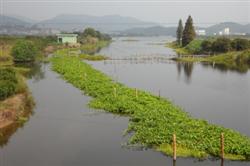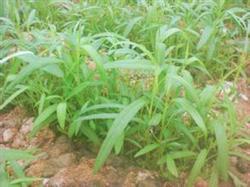Off-season cultivation techniques of water spinach (Ipomoea aquatica)

Water spinach, also known as hollow cabbage, is one of the leaf vegetable varieties that the general public likes to eat. It produces more in summer and autumn, and is not suitable for its growth in winter and early spring because of its low temperature. But in recent years, it has been successfully cultivated in small arch shed, film greenhouse and other facilities. It can be listed and supplied before and after the Spring Festival, and better economic benefits have been achieved. Now the main cultivation is introduced as follows: first, varieties: the selection is mainly Thai sharp leaf varieties, can also be cultivated with local or Guangxi willow leaf (sharp leaf) varieties. Second, the planting time: generally, the seeds can be sowed in the middle or late November to the first or middle of February of the following year. Third, planting methods: spread, strip sowing or on demand can be used. 4. Seed consumption: 3-4kg per mu. Facilities: mainly small arch shed, film greenhouse, conditional glass greenhouse is better. 6. Main cultivation techniques: 1, fine soil preparation, fine soil; 2, lower foot base: mainly rotten organic fertilizer, applying 500-1000kg of pig and cow manure or 150-200kg of natural organic fertilizer per mu, combined with compound fertilizer or appropriate amount of N fertilizer; 3, covering soil 2-3cm after sowing, and timely replanting or transplanting if the emergence rate is low. 4. when growing in a small arch shed, pay attention to the temperature and humidity in the shed, ventilate and refine the seedlings after emergence, the seedlings can be ventilated and ventilated with both ends of the film to control the temperature and humidity, and the seedlings should be exposed at noon on a sunny day after a true time. When the temperature is high, the time of refining seedlings is longer, and the temperature can be shortened when the temperature is low. Attention should be paid to timely watering after opening the film (especially the first and second refining seedlings) to avoid affecting the quality of the leaf tip caused by the imbalance of temperature and humidity. Film greenhouse, greenhouse should also pay attention to timely ventilation, adjust the appropriate temperature and humidity; 5, after the seedlings grow to 2 true leaves, if the fertilizer is insufficient, they should be fertilized in time, mainly quick-acting N fertilizer (such as urea or compound fertilizer), and should be washed with clean water in time after fertilization. 6. Harvest: it can be harvested 25-30 days after sowing, and can be plucked and replanted at one time, such as on-demand or strip sowing. The plant spacing is 15 × 20cm, and fertilizer is applied 1-2 days before or after harvest. 7. Pay attention to the control of diseases and insect pests: ① diseases: leaf spot, anthracnose, quenching, carbendazim, thiophanate, chlorothalonil and other insecticides can be used to control ② pests: green insects, aphids, jumping beetles, etc., which can be controlled by low toxic insecticides such as deltamethrin, deltamethrin, trichlorfon, etc. ③ should be harvested more than 7-10 days after spraying.
- Prev

Measures to prevent diseases and insect pests of asparagus
1. Make seedlings: when the branches growing from the nodes are 20 cm long, cut off the seedlings with fibrous roots as seedlings. 2. Cultivation methods: prepare braided grass ropes, wooden stakes and floats (plastic foam spherical flotation for fish net). When planting, press the seedling to 15ml / 20cm.
- Next

How to manage asparagus in solar greenhouse
After planting or direct seeding of asparagus seedlings, ploughing and loosening the soil should be carried out many times in order to increase the ground temperature, promote rooting and remove weeds in the field. Asparagus seedlings need less water at seedling stage and can be irrigated properly. The soil should be kept moist after harvest. After the first harvest, 15 kg of urea or diammonium phosphate per mu.
Related
- Where is it suitable to grow horseradish in China? it is expected to see the middle altitude horseradish in Alishan.
- How to prevent tomato virus disease reasonably? (Control methods included)
- Many people like to plant towel gourd on the balcony. What are the main points of this method and management?
- What crops can chili peppers be mixed with?
- Fertilization techniques and matters needing attention in Tomato
- What are the grafting techniques for peach seedlings in spring?
- Harm and control methods of root swelling disease of Chinese cabbage
- What are the pests of sweet potatoes? How to prevent and cure it?
- Symptoms, causes and Control methods of navel Rot in Tomato
- The cause of "Cucumber rotten bibcock" in Farmers' planting Cucumber and its Control Plan

